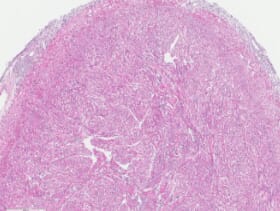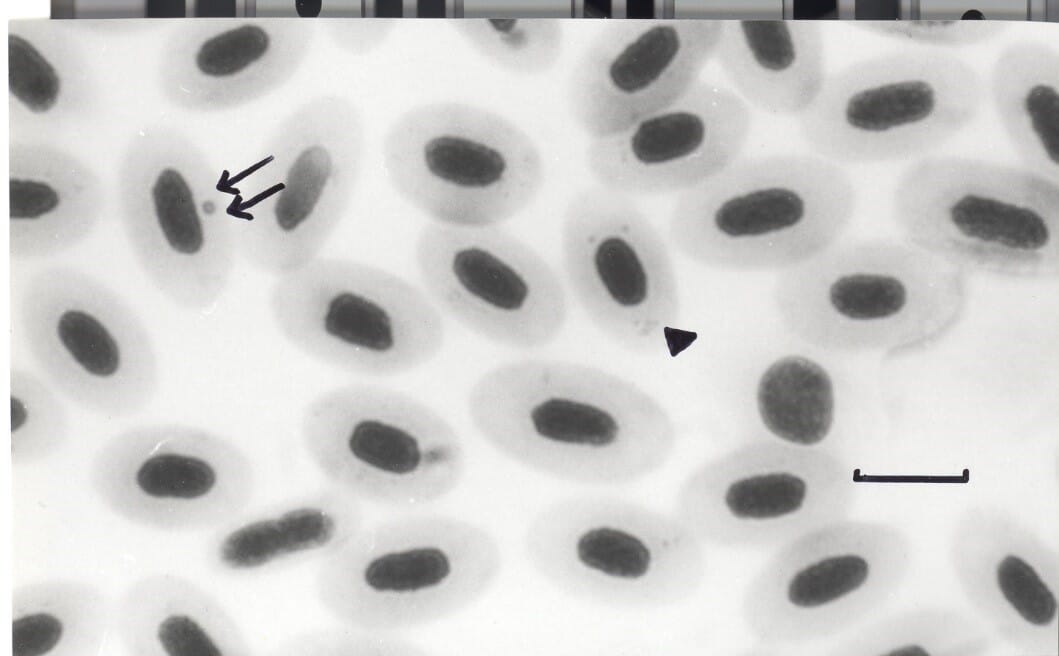Piscine Reovirus and Heart and Skeletal Muscle Inflammation
Heart and skeletal muscle inflammation (HSMI) was first described in Norway in 1999. In 2010, a newly discovered virus was identified from the hearts of HSMI affected fish. This virus, piscine reovirus (PRV) is widespread amongst Norwegian salmon farms even in the absence of clinical disease, but the viral load is significantly elevated during an HSMI outbreak. Whilst PRV is widely accepted as the causative agent of HSMI, much remains unknown about the relationship between the two.
PRV has been observed in a number of wild and farmed fish species in Canada, Chile, Norway and Scotland. Although PRV has been found in wild fish species, HSMI has so far not been recorded in wild populations.
In a survey conducted in Norway from 2007-2009, PRV was found present in 13.4% of wild Atlantic salmon, however, no HSMI-type microscopic changes were observed. It is likely that the absence of disease in many wild and farmed salmon despite PRV infection is because other factors must be present concurrently with PRV infection to result in the development of clinical HSMI.

Characteristics of a Heart and Skeletal Muscle Inflammation Outbreak
An outbreak of HSMI is typically characterised by the development of clinical signs including abnormal swimming behaviour and anorexia 5–9 months after sea transfer. Characteristic changes in affected fish include signs of circulatory disturbance pale heart, fluid accumulation in the abdomen, yellow liver, swollen spleen and bruising in perivascular fat. Affected cages often suffer high morbidity, with mortality ranging from negligible to 20%.
Microscopically, lesions are predominantly present in the heart and skeletal muscle. The heart muscle itself and the lining of the heart chambers becomes inflamed. Muscle fibres break down and are infiltrated with inflammatory cells. It is these histopathological changes which enable diagnosis.
Piscine Reovirus and Erythrocytic Inclusion Body Syndrome
Results of a recent study suggest that HSMI is probably only one possible outcome of PRV infection. This study demonstrated high PRV loads within erythrocytes (red blood cells) of infected fish, with visible intracellular inclusion bodies similar in appearance to some previous reports of erythrocytic inclusion body syndrome (EIBS) (Figure 2).
EIBS has been found in both healthy salmon as well as fish showing clinical symptoms of anaemia. It is likely that PRV is associated with at least some of the historical cases of EIBS. Previous studies have shown that the EIBS virus is widespread in both wild and farmed salmon in Scotland and was associated with focal cardiac inflammation in farmed fish (Rodger, pers. comm.).

Piscine Reovirus in Freshwater
PRV has been isolated from cultured salmon during both fresh and saltwater production stages in Norway and Scotland. Clinical HSMI has predominantly only been reported in fish during the marine stage of production. There has however been a low number of cases of HSMI reported in freshwater in Norway.
No correlation has been observed to date between freshwater PRV status and the development of HSMI during marine production stage. PRV positive pre-smolts have been detected in both salmon cohorts that went on to develop HSMI subsequent to sea transfer, as well as cohorts that remained disease free.
Route of PRV Transmission
A study following Norwegian broodstock and progeny from 2008 to 2011 found that PRV was not isolated from eggs collected from broodstock with a high PRV prevalence, suggesting vertical transmission (from fish to egg) is unlikely to play a major role in PRV spread.
Canadian researchers observed a greater proportion of PRV positives among farmed salmon than wild salmon, and have suggested that PRV transfers readily among salmon within a farm but not as readily from infected salmon (cultured or wild) to wild salmon.
It must be remembered however that PRV is a fairly recently identified virus and research continues into the role PRV plays in the development of HSMI, the risk posed to wild populations by PRV infected farmed salmon and the role of wild fish in transmission of PRV between farms.
Current Piscine Reovirus Status of Scottish Salmon
HSMI has been observed across all farming regions of Scotland, however published information regarding the occurrence of HSMI on Scottish farms is limited to a single report on a suspected outbreak in 2004 and a recent report on HSMI outbreaks in the Shetland Isles from 2005 - 2012.
In the Shetland Isles, the number of HSMI cases from 2005 - 2012 varied between zero and two annually, with resultant mortality reaching 35% during an outbreak on one site. Since testing for this virus became available, some producers have reported up to 95% of their sites consistently testing positive for PRV.
It is believed this virus is fairly ubiquitous across Scottish farms as is the case in Norway. The prevalence of PRV in wild fish populations in Scotland and Ireland remains to be elucidated.
There have been reports of increased downgrades due to discoloured fillet marks in batches of fish subsequent to elevated serum levels of the enzyme creatine kinase (CK). This enzyme can indicate muscle damage and is known to increase during HSMI infection. It is suspected that PRV infection may have been responsible for these elevated CK levels and fillet discolouration however this has not been conclusively established.
Future Impact on the Scottish Salmon Industry
Although there is limited published information available regarding the incidence of PRV on Scottish farms, fish health professionals feel it is a pathological agent to keep a close watch on. It is possible that HSMI and other potential consequences of PRV infection (such as EIBS and fillet damage) will become an increasing concern for the Scottish industry in coming years.
At present, recommendations to producers in the face of an HSMI outbreak centre around best husbandry practices such as avoiding stress, prompt removal of moribund and dead fish and immunomodulatory functional feeds.
A more comprehensive understanding of the relationship between this virus and the development of disease is needed to improve control and treatment strategies. An industry wide review of suspected and confirmed cases of HSMI in Scotland would also assist in quantifying the impact of this disease and in turn provide greater indication as to the future risk it poses to salmon production in Scotland.
June 2015



